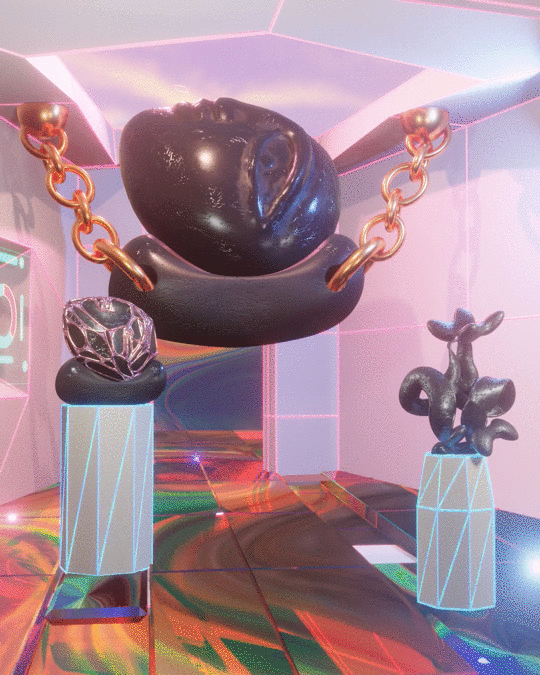Artist Interview: Prerit Jain
Prerit Jain is a multimedia and extended reality artist, toy and game designer. He is interested in creating an altered audiovisual aesthetic developed from applying various techniques and ideas derived from digital culture, biology, pedagogy, and childhood.
The artist employs digital tools to manipulate and alter data, and his practice revolves around playfulness and the role of emerging technology as a medium for human connection with oneself and the environment.
We asked Prerit about his art, creative process, and inspirations.
Digital Art by Prerit Jain: Queen
Can you tell us about your background as a digital artist? How did you get started in this field?
I was raised in Pipariya and Indore, India. Growing up in a rural area, I used to draw and play with materials found in nature like clay and plants. With a keen interest in biology, I studied dental science, as I was not aware of art and design at that time. I practiced clinical dentistry for about two and a half years, during which I began using Photoshop for aesthetic dentistry and engaging in photo manipulation for fun. Subsequently, I pursued a Master’s in Design Studies in Toy and Game Design. Since then, I have been involved in playful learning, making music videos, creating game asset and environments, and making crochet toys.
Digital Art by Prerit Jain: Neon God
“I make visual art by playing around with generative tools and programs that create fractals. Some visuals are also inspired by psychedelia, childhood nostalgia, and elements of absurd humor.”
Digital Art by Prerit Jain
What inspires your art? Are there any particular themes or subjects that you enjoy exploring through your artwork?
I'm inspired by everyday surroundings, memories of childhood, music, and other art forms. I enjoy exploring themes ranging from biology and digital culture to consumerism and identity. Currently, I aim to create magical, funny, and cozy spaces.
Digital Art by Prerit Jain
Can you tell us about creating gamified learning experiences for children — how does pedagogy come together with your creativity?
Play is essential to both learning and being; it occurs in a self-paced environment where the user/player has agency or an illusion of control. The challenge with gamification is that it incorporates learning objectives into a game-like experience by simply adding points and rewards. Once players realize the agenda, they lose motivation.
I try to create interactive experiences where 'fun' is central, inherently providing learning value. With a theme related to a given topic, it acts as a layer, adding to the playfulness.
Digital Art by Prerit Jain
What is an event which you consider a milestone in your digital art career?
Getting into a design school was pivotal. Because first, I am affected by people around me and their expectations, so it was liberating since the design as a profession is still new here, and they don't have an idea of what a designer should look like. Secondly, it provided time and space to explore and find answers to existential questions around queerness, identity and how various discipline and systems are interconnected.
Digital Art by Prerit Jain: Shoes Juice
You work with AR, animation, interactive experiences, and more — can you describe your process? Do you come up with a concept and then decide on the medium, or does medium come first?
It works both ways, and back and forth. Playing around with the medium is a fun way to discover its capabilities, giving rise to new techniques or unique works. while brainstorming and mood boarding provides ideas about the direction I need to take.
Digital Art by Prerit Jain: Jogi Bhadak
What is a fun fact about you?
I like to collect rocks, dried flora, and scents.
Digital Art by Prerit Jain: Stone
What else fills your time when you’re not creating art?
Gardening, knitting, making papier-mâché, which often get interrupted by house chores.
Digital Art by Prerit Jain: Terratoma
How do you see digital arts evolving in the future?
As technology advances rapidly, I can only imagine emergence of interactive, participatory, and immersive art forms seamlessly blending with the physical environment to incorporate tactile and olfactory sensations. The evolving media landscape has the potential to offer novel perspectives through its distinctive affordances.
Digital Art by Prerit Jain: Weight of Memories























